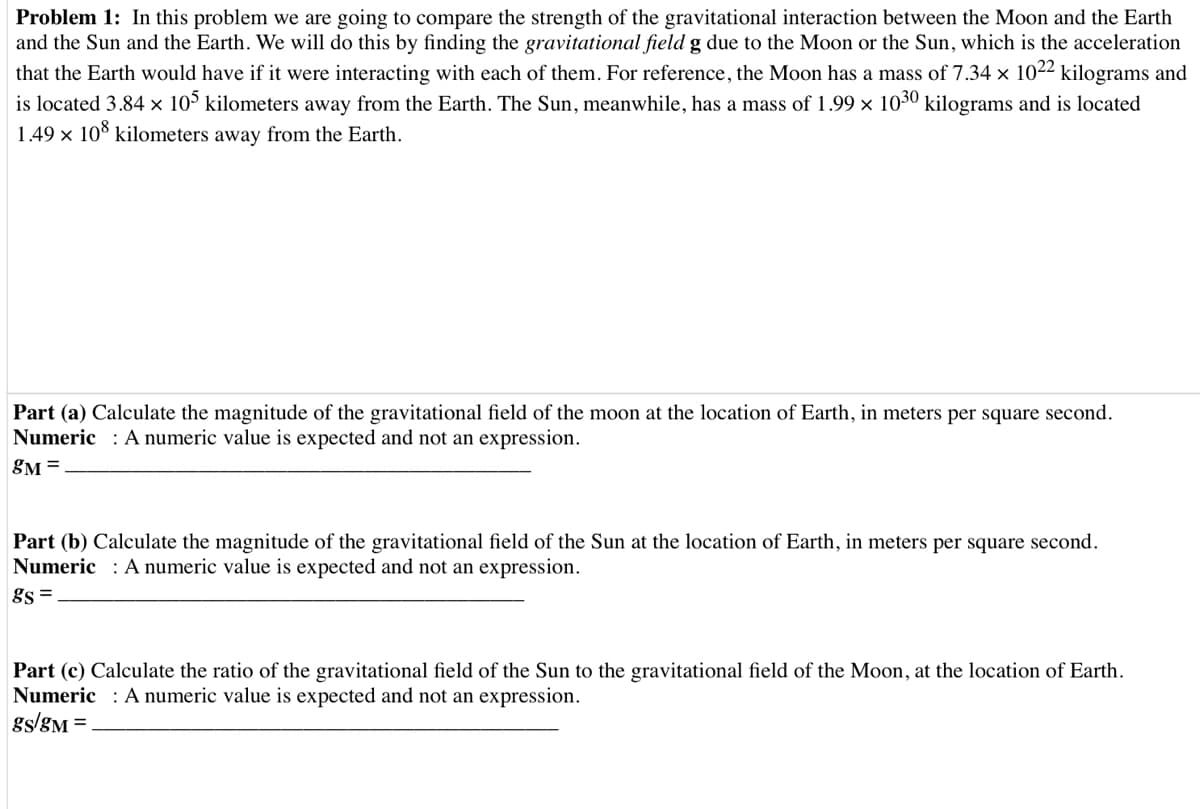Problem 1: In this problem we are going to compare the strength of the gravitational interaction between the Moon and the Earth and the Sun and the Earth. We will do this by finding the gravitational field g due to the Moon or the Sun, which is the acceleration that the Earth would have if it were interacting with each of them. For reference, the Moon has a mass of 7.34 x 1022 kilograms and is located 3.84 x 10° kilometers away from the Earth. The Sun, meanwhile, has a mass of 1.99 x 1030 kilograms and is located 1.49 x 10 kilometers away from the Earth. Part (a) Calculate the magnitude of the gravitational field of the moon at the location of Earth, in meters per square second. Numeric : A numeric value is expected and not an expression. §M = Part (b) Calculate the magnitude of the gravitational field of the Sun at the location of Earth, in meters per square second. Numeric : A numeric value is expected and not an expression. gs = Part (c) Calculate the ratio of the gravitational field of the Sun to the gravitational field of the Moon, at the location of Earth. Numeric : A numeric value is expected and not an expression. gs/gM =
Gravitational force
In nature, every object is attracted by every other object. This phenomenon is called gravity. The force associated with gravity is called gravitational force. The gravitational force is the weakest force that exists in nature. The gravitational force is always attractive.
Acceleration Due to Gravity
In fundamental physics, gravity or gravitational force is the universal attractive force acting between all the matters that exist or exhibit. It is the weakest known force. Therefore no internal changes in an object occurs due to this force. On the other hand, it has control over the trajectories of bodies in the solar system and in the universe due to its vast scope and universal action. The free fall of objects on Earth and the motions of celestial bodies, according to Newton, are both determined by the same force. It was Newton who put forward that the moon is held by a strong attractive force exerted by the Earth which makes it revolve in a straight line. He was sure that this force is similar to the downward force which Earth exerts on all the objects on it.

Trending now
This is a popular solution!
Step by step
Solved in 2 steps









